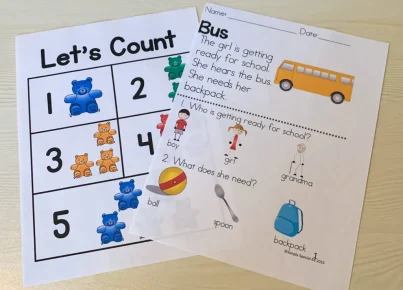Introduction
Special Educational Needs (SEN) provision is a crucial aspect of the education system, ensuring that students with disabilities or learning difficulties have access to accommodations and support services tailored to their individual needs. In this article, we will take a closer look at SEN provision, exploring its importance, the different types of support available, and how schools can effectively implement these provisions.
What is SEN Provision?
SEN provision refers to the additional support, resources, and services provided to students identified as having special educational needs. These needs may stem from physical disabilities, learning difficulties (such as dyslexia), emotional or behavioral issues, or other factors that may affect a child’s ability to learn. The goal of SEN provision is to ensure these students have an equal opportunity to achieve their full potential by addressing the barriers they might face in accessing education.
Why is SEN Provision Important?
1. Inclusivity: SEN provision enables schools to create an inclusive environment in which students with diverse needs are included and supported alongside their peers.
2. Empowerment: Providing the right support can help students with special educational needs feel empowered and more confident in their abilities.
3. Improved outcomes: By addressing the individual needs of each student, SEN provision can help improve overall learning outcomes and contribute positively to a student’s self-esteem and long-term success.
Types of SEN Provision
1. Individualized Education Plan (IEP): An IEP is a legally binding document that outlines the specific goals and accommodations for a student with special educational needs. It includes information about the child’s current level of academic achievement, their goals for learning, and any modifications or accommodations they may require.
2. Specialist staff: Some students may need additional support from professionals with specialized training in areas such as speech therapy, occupational therapy, behavioral support, or special education instruction.
3. Assistive technology: Many students with special educational needs can benefit from using assistive technologies, such as speech-to-text software, adapted keyboard and mouse sets, or specialized computer programs.
4. Differentiated Instruction: This is a teaching approach that takes into account the diverse learning needs and preferences of each student. Teachers modify their lesson plans, assessments, and learning activities to accommodate students with different abilities and learning styles.
Implementing SEN Provision in Schools
1. Early identification: It is essential to identify special educational needs as early as possible, ensuring that relevant provisions can be made to support the student in their education.
2. Regular assessments and reviews: Regular assessments of progress are crucial for monitoring the effectiveness of SEN provision. These assessments can help schools identify any adjustments that may be needed to support the child further.
3. Collaboration: Effective SEN provision depends on strong collaboration among teachers, support staff, parents or caregivers, and even external professionals when needed.
4. Staff training and development: Ensuring that educators have the necessary skills and knowledge to support students with special educational needs is vital for SEN provision’s success in schools.
Conclusion
SEN provision is an essential aspect of education that seeks to promote inclusivity and maximize the potential of all students, regardless of their differences or challenges. By understanding the various types of SEN provision available and taking action to provide tailored support for students who need it, schools can make a real difference in ensuring equal opportunities for all students.





